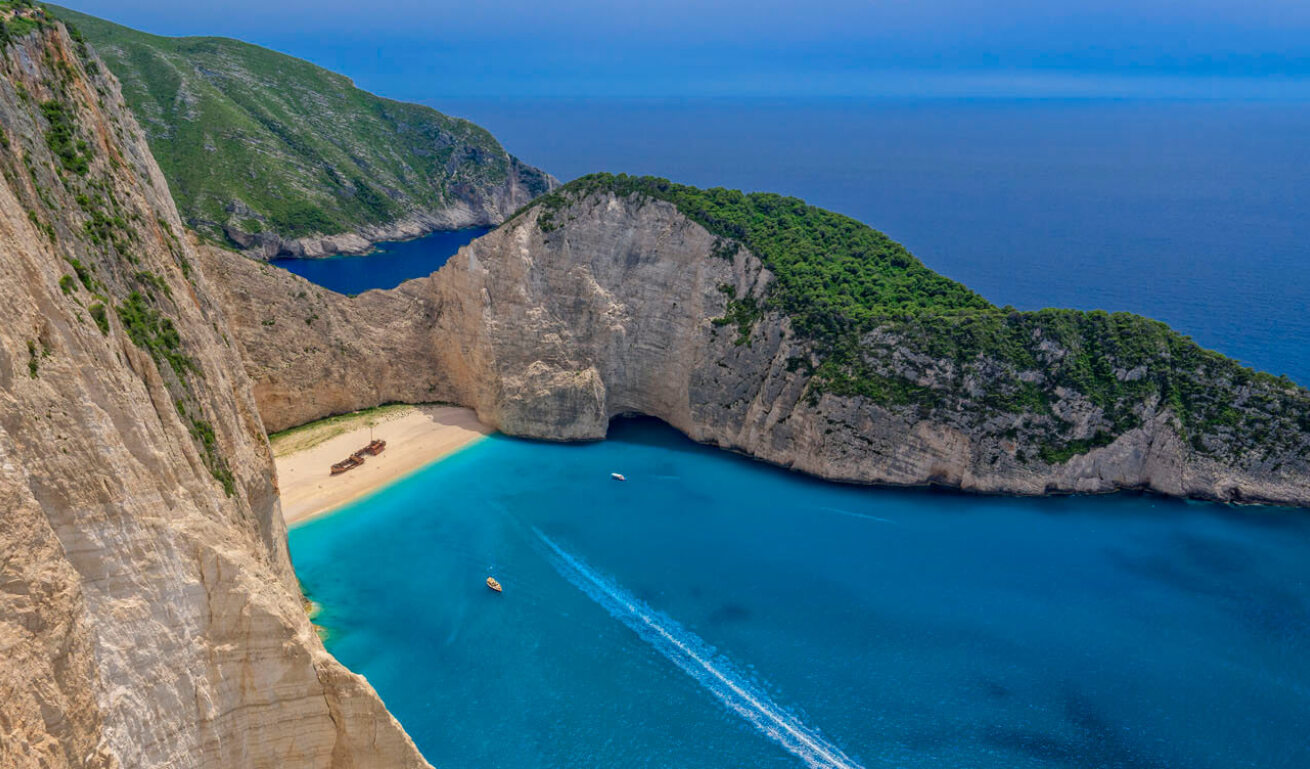

Ionian
A Green Oasis of Turquoise Waters
Scattered off the western coastline of Central Greece and to the south of Peloponnese, the Ionian Islands are an island group comprising large and small islands.




Where to go...
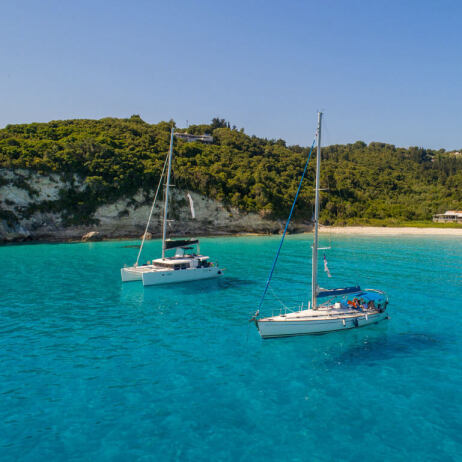
Antipaxoi
Although a small island, it is endowed with outstanding beauty. The island of Antipaxoi (literally meaning “opposite Paxi”) lies at just 3 nautical miles from the port of Gaios.
Antipaxoi is famous for its renowned beaches, among which Voutoúmi, with its exotic turquoise waters, is supposed to be one of the most beautiful in the world. But travellers will cherish the place as much as the wine. Apart from the traditional methods of producing wine of fine quality and other Greek varietals (the worldwide famous “mavrodáfni” is one of them), enhanced, biological cultivations transform the local wine into a product of high nutritional value.
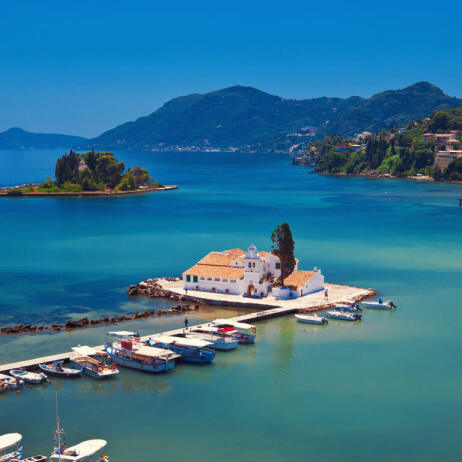
Corfu
With the passage of time the island of Corfu may have changed, but any traveler can still feel the spirit of a distant glorious past. Its rich multi-cultural heritage, its historic monuments, its stunning natural landscape, its crystal clear seas, and its excellent weather all year round explain why Corfu is one of the most cosmopolitan Mediterranean destinations weaving a powerful spell on its visitors.
Corfu (Kerkyra in Greek), unlike the rest of Greece, never fell under the Ottoman oppression. Due to the successive dominations of the Venetians, the French and the British over the centuries, the island has primarily become part of the Western rather the Levantine world. Their culture wielded strong influence in the city: it was here that the first Greek University (the Ionian Academy), the first Philharmonic Orchestra and the First School of Fine Arts were founded.
Let Corfu weave its spell over you with its historic monuments, rich multi-cultural heritage and stunning natural landscape.

Ithaca
Worldwide famous as the home of Odysseus, Ithaca symbolises the return to the haven, the discovery and the fulfillment. Today, it is a peaceful, quiet and secluded island, an ideal place for alternative activities such as scuba diving and kayaking, which can live up to your highest standards. Through its plethora of hiking and mountain bike trails you can explore the coastal and mountainous areas of the island, where olive, cypress, pine, oak, arbutus and carob trees grow. Explore the island on foot - on ancient historical and enchanting trails - and don't forget to visit the Cave of the Nymph (or Marmarospilia) near Vathy. According to the Homeric myth, this is where Odysseus had hidden the gifts he had brought along from the land of the Phaeacians.
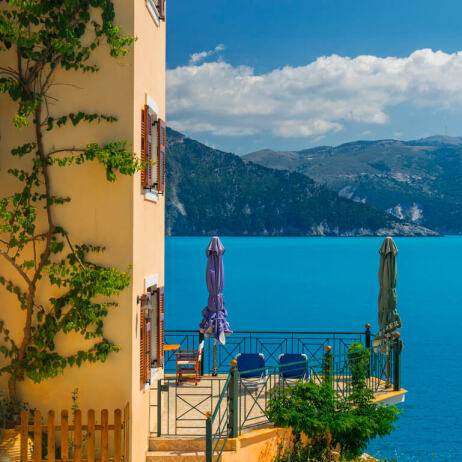
Kefalonia
This green island with its breathtaking beaches and crystal clear waters of greenish-blue colours will take your breath away. Kefalonia a gem in the Ionian Sea. It carries a rich history in cultural tradition. It’s the biggest Ionian Island and the green of its mountains blend with the blue of the water making it truly unique and a beloved destination. Pine, cypress and olive trees cover Mt. Ainos' peak, while at its foot you’ll come across vineyards where the popular Kefalonian Robola wine variety is produced.
If you happen to love snorkeling or diving then the seabed around the island will definitely satisfy you. You might even get the chance to encounter the rare, caretta- caretta, sea turtle that take refuge here, as well as the monk seals monachus monachus. Kefalonia’s culinary tradition, history, traditional villages, upbeat nightlife and pristine beaches will make you fall in love with the island.
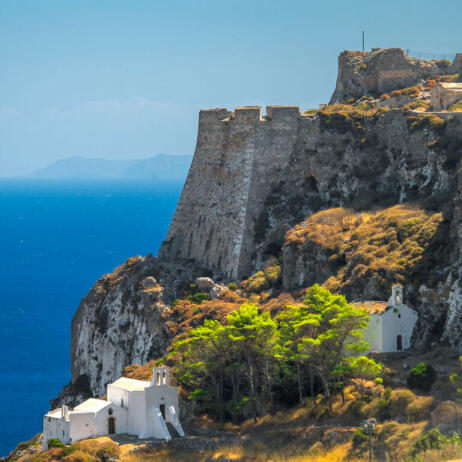
Kythera
Kythera Island is the birthplace of Aphrodite, goddess of love, according to Hesiod (ancient Greek poet who lived during Homer’s time). The island was a source of inspiration for French painter Jean Antoine Watteau as well as for the 19th c. great French poet Charles Baudelaire, and for 20th c. Greek filmmaker Theo Angelopoulos.
It’s a place endowed with great beauty: valleys that end on the seashore; mountainsides dressed in green, or rocky and barren; spring waters gurgling or cascading down the slopes; wonderful beaches; beautiful picturesque little villages; local tasty dishes; and an architecture that blends the apparent Venetian influences with the style found in Crete and Mani (south Peloponnese). The above is an outline of what you can expect to experience in this must-visit destination that is picture-perfect Kythera Island.
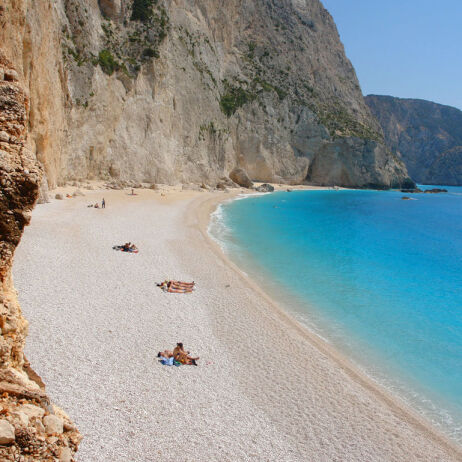
Lefkada
Lefkada is surrounded by a total of 24 islets - Aristotle Onassis’ Skorpios being one of them. It connects to the opposite coast of Central Greece via a floating swing bridge (length: 50 m). The bridge offers easy access to Lefkada to visitors from all over Greece. On Lefkada you will find noteworthy sights, churches and monasteries, picturesque villages, lush vegetation, idyllic coves of transparent, turquoise waters, busy and secluded beaches of stunning beauty, a significant cultural heritage and hospitable locals.
Lefkada is the island’s capital and port town. The town planning is a very particular one and resembles a “fish backbone”. There are picturesque alleys, small squares, traditional houses, elaborate belfries and paved pedestrian zones that give this town its character. The city is surrounded by a canal and a lagoon, while, farther north, lies Gyra, a thin stretch of a sandy beach forming a circle, dotted with windmills and scant vegetation.
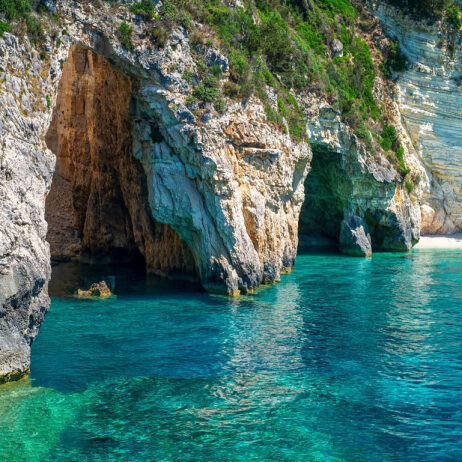
Paxi
Cultural village of Europe for the year 2004, Paxi (or Paxoi) is the ideal island for a peaceful holiday. Beautiful beaches, underwater caves, small bays and green hills welcome you in the most delightful way. According to the legend, the island would be the southernmost tip of Corfu, if the God of the Sea, Poseidon, had not broken it off with his trident when he needed a god-deserving place to live his love with the Nereid Amphitrite.
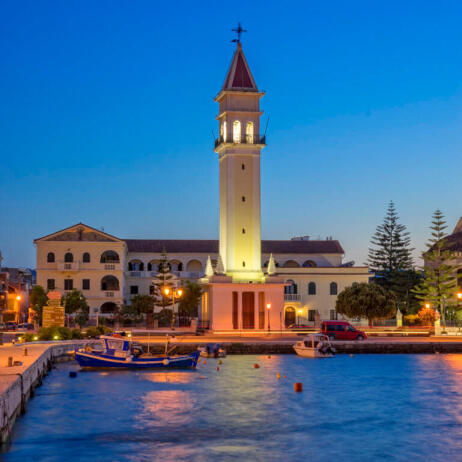
Zakynthos
Zakynthos (aka Zante) is a verdant island endowed with fertile valleys and a temperate climate (area: 406 sq. km; coastline: 123 km). Its landscape diversity has resulted in different types of beaches: there are sandy beaches in secluded coves where the tranquil waters are deep blue on the island’s southeastern part; yet, if rugged cliffs and an interesting underwater world are to your liking, try the western part of the island.
The Venetians, who ruled Zakynthos from 1484 to 1797, called the island “Fioro di Levante” (flower of the East) as there are over 7,000 species of flowers on Zákynthos. The third largest island of the Ionian Sea, after Corfu and Kefalonia, is internationally known as “Zante”. Zakynthos is said to have been the island’s first inhabitant and the ancient acropolis is attributed to him. He was the son of Dardanos who ruled the ancient kingdom of Frigia. A Venetian fort was built at later times on the site.
Island Gems in the Ionian Sea
Nature
Activities
History and Culture
Cuisine

Local Dishes
VIEW ALLTips for your Trips
VIEW ALL
Sailing the Ionian Sea
If you are dreaming of sailing off, keep in mind the emerald waters of the seaworthy Ionian Sea. Open your sails at the depth of the horizon, where the sky seems to be leaning on the sea.

August Religious Festivals on Greek Islands
Every year on the 15th of August the Orthodox Church celebrates the Virgin Mary, where thousands of pilgrims make use of the numerous shrines dedicated to "Her Grace".
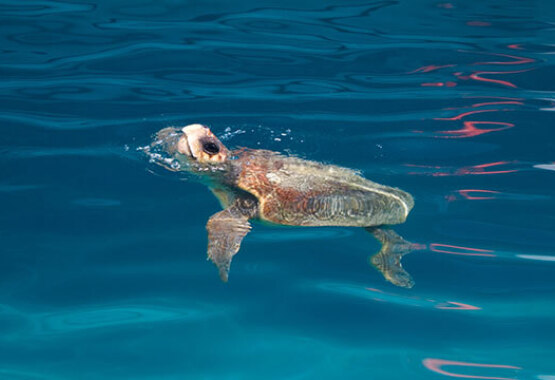
Marine & Zoological Parks in Greece

